Project: Innovative Classrooms Model
My Role
As the Director of Digital Learning and Technology at Cohasset Public Schools (2020-2023), I led a collaborative district-wide effort to research and design a vision for the “Innovative Classroom” as part of the Leadership team’s new 2021-2024 Strategic Plan.The “Innovative Classroom” project was also an opportunity after the pandemic to reimagine the classroom by reflecting on what we could take forward from the experience.
How might we redesign the learning environment in ways that will transform teaching and learning at Cohasset Public Schools?
Approach
I used the Design Thinking Framework (IDEO, Stanford D School) to workshop identifying the problems in the existing classroom environment that we wanted to address in the new model and to ideate and iterate on possible solutions with faculty and students..
Research
I conducted a series of focus groups and discussions with faculty and students and collected data from surveys to uncover the top pain points in the existing classroom model.
In virtual sessions using Zoom and Google Jamboard, participants looked at photos of current classrooms and identified the elements – the physical and the digital – that make up the current learning environment. Participants were then asked to share what worked well in addition to what they would take forward from remote and hybrid learning during the pandemic. They then shared what improvements to the classrooms they needed in order to enable their vision and brainstormed possible solutions.

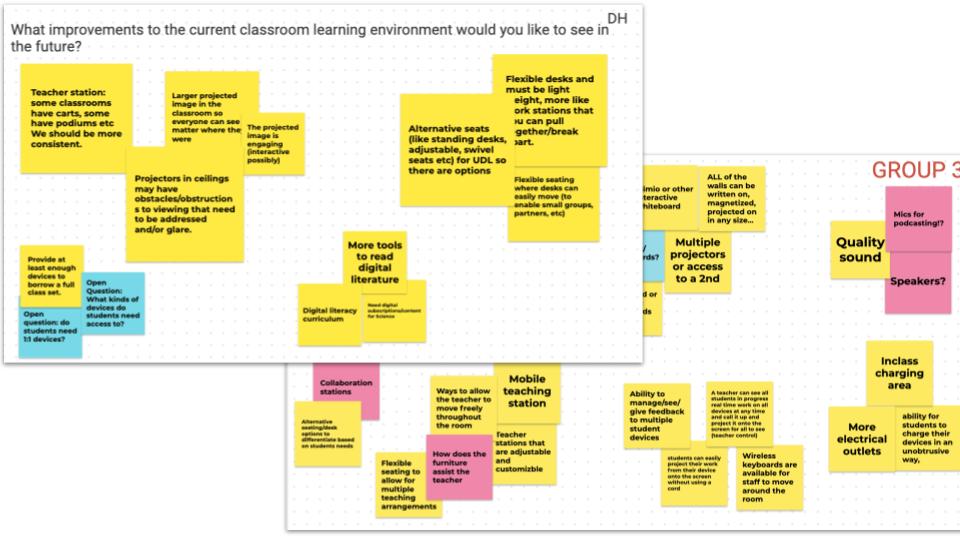
A synthesis of the data revealed the top needs in the classrooms:
- Audio/visual display systems needed to be upgraded to improve engagement and provide students with equitable, inclusive access to learning
- “Untether” the teacher and students from their desks to enable more student-student and teacher-student collaboration

Quotes from CPS Innovative Classrooms surveys and discussions
Prototype for Future Classrooms
A vision for the “Innovative Classroom” began to emerge from the research where the classroom moved from teacher-centric to more student-centric, inclusive, and personalized and from fixed furniture and “tethered” teachers at the front of the room, to flexible, engaging and collaborative spaces.
For example, in the middle and high school grades, mobile charging stations replaced electrical outlets in the floor, the teachers used mobile podiums with 2-in-1 laptops and wireless casting, and interactive whiteboards on carts with live streaming capabilities enabled more collaborative and engaging learning opportunities both inside and beyond the physical classroom walls. Participants were asked to sketch what their optimal future classroom might look like and a paper “prototype” was created.
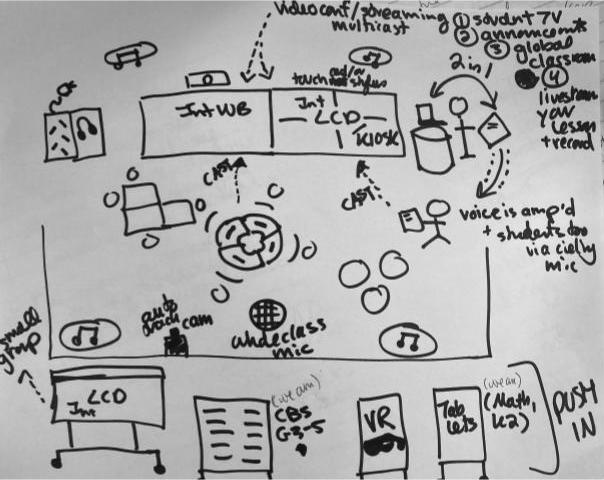
Example of a paper prototype of an Innovative Classroom based on user research
I then engaged CDW-G Education Team’s “Blueprint To Design” services to take our paper prototypes to the next iteration. They conducted a series of exercises with building-based teams to create blueprints and 2D renderings of what these future classrooms could look like in real life, including furniture, walls, floors, and technology. School leaders chose representative rooms for each subject (12 rooms total) and I worked with volunteer teachers to collect their iterative feedback on the designs (“I like/I wonder”). The layouts, selections of furniture and technologies varied by the learning activities taking place in each subject area.
In the end, every school leader had a set of renderings and quotes for what their building’s optimal future classrooms, taking into account the physical limitations of the current spaces, could possibly look like in support of the Strategic Plan, along with estimated costs.
The next step would be test as quickly as possible small “slices” of these prototypes (i.e. furniture, teacher laptops, AV, etc) in short pilots to inform final purchasing decisions. I led the AV technology pilot as part of this process.
From
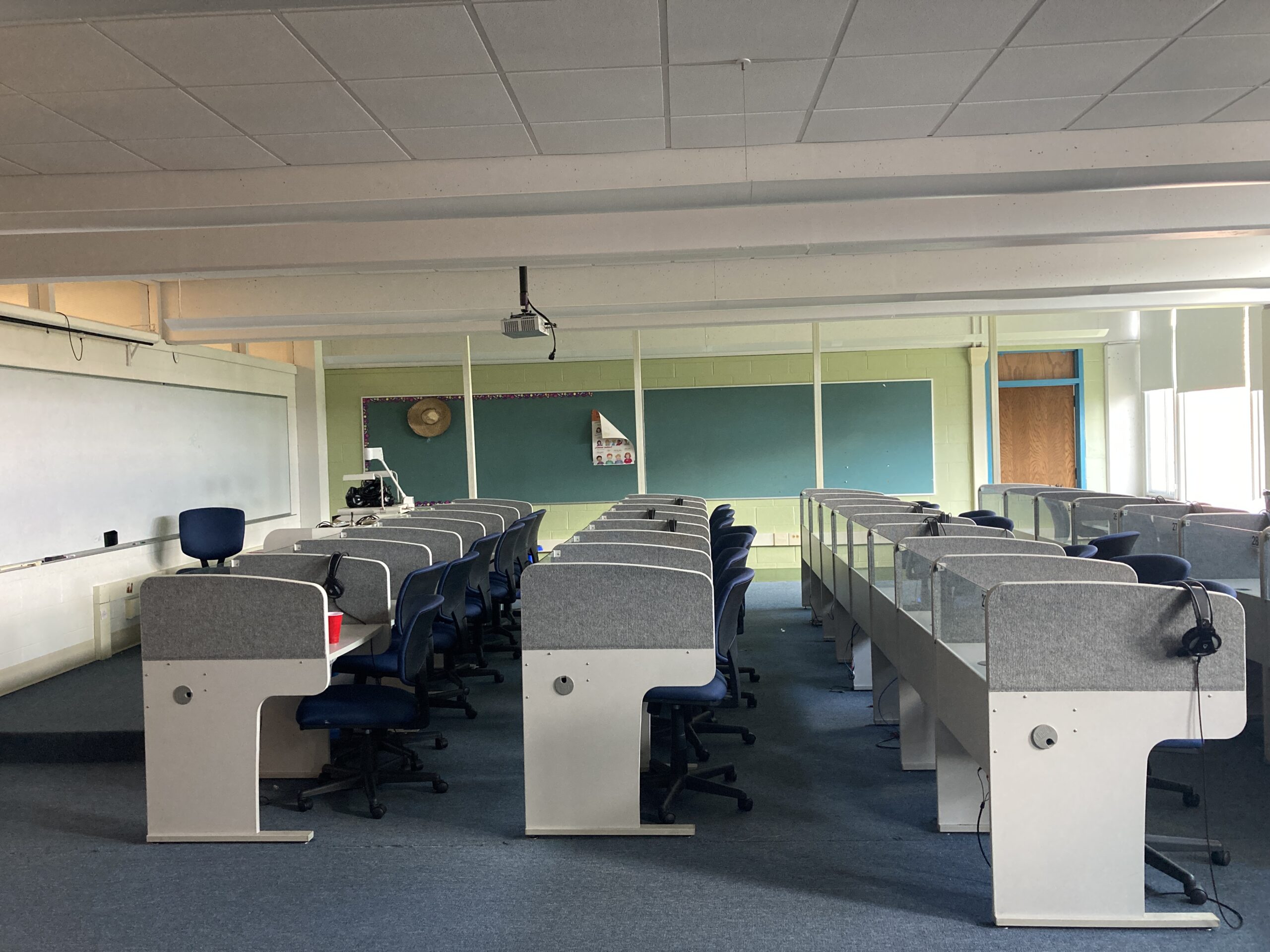
From: Photos and dimensions of a current Middle School Language Lab
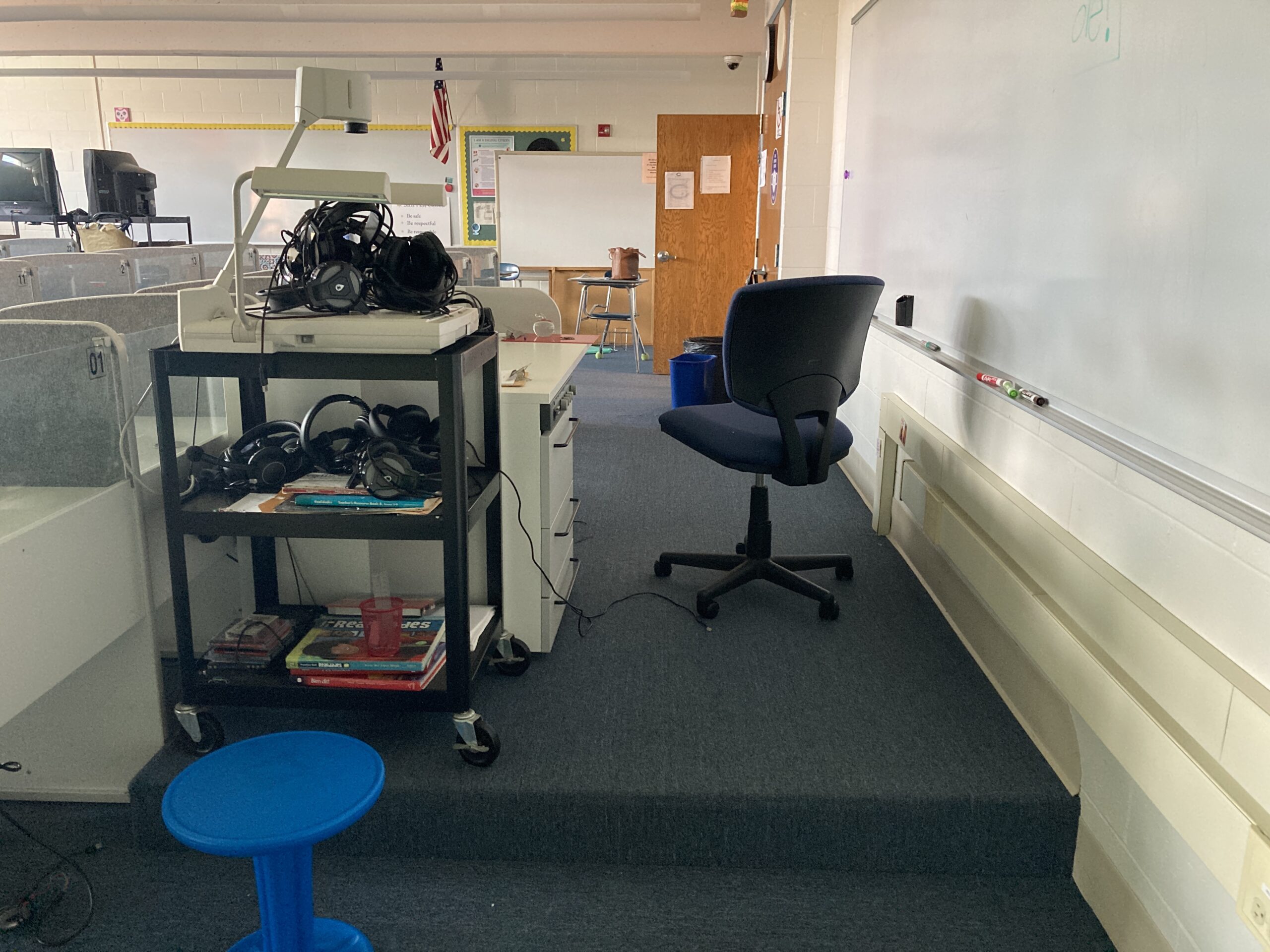
From: An example of a “tethered” teacher station in the Middle School
To
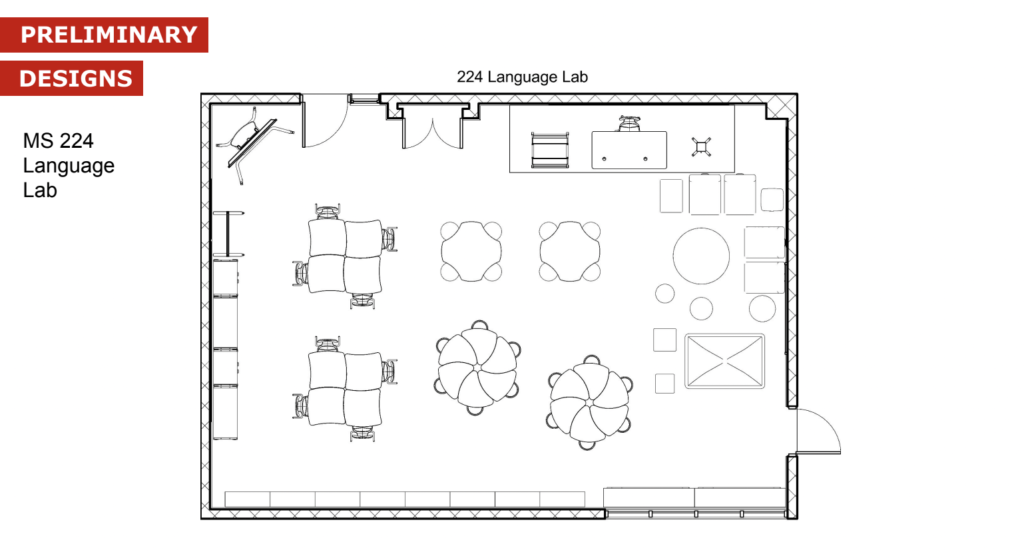
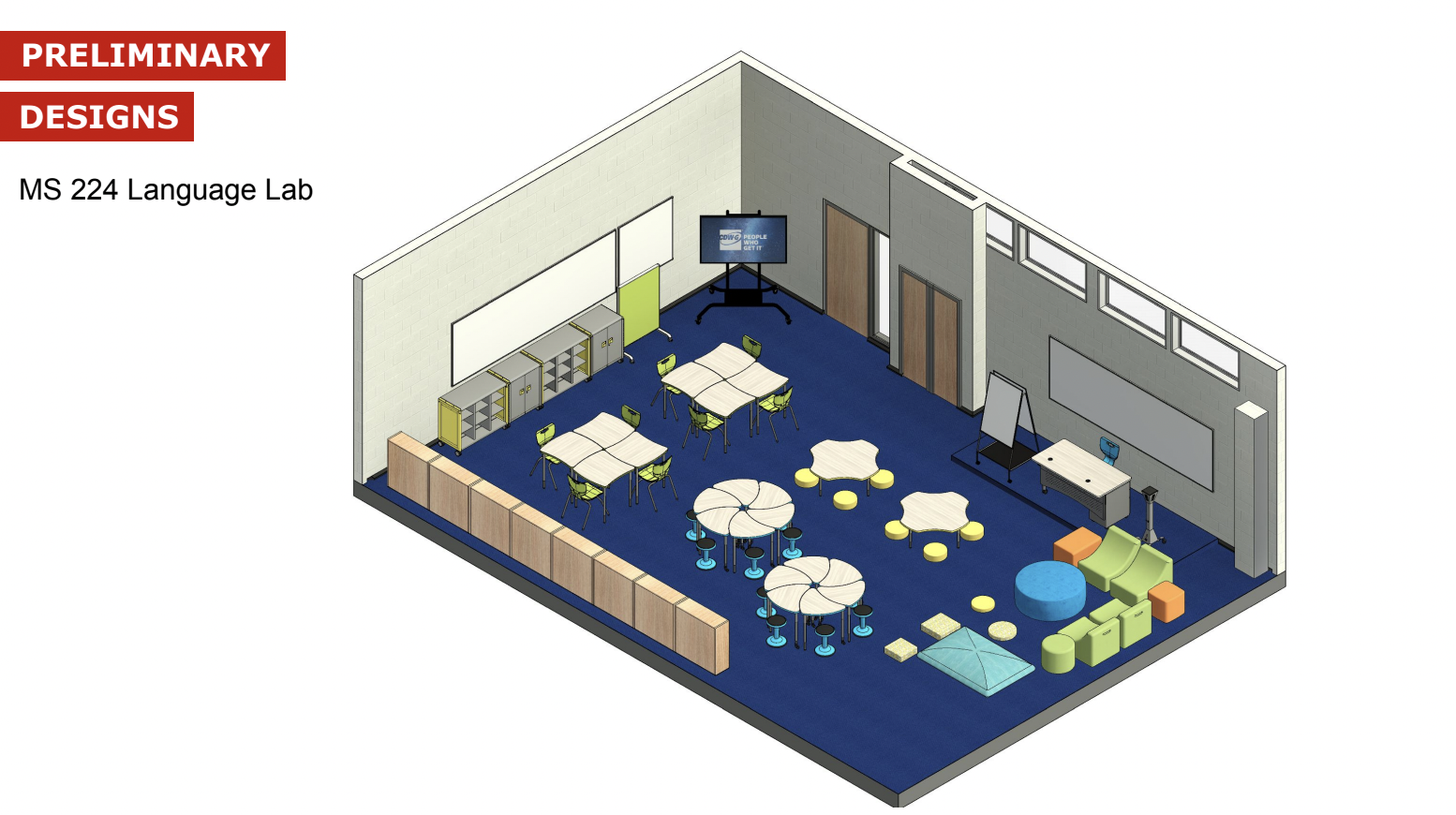
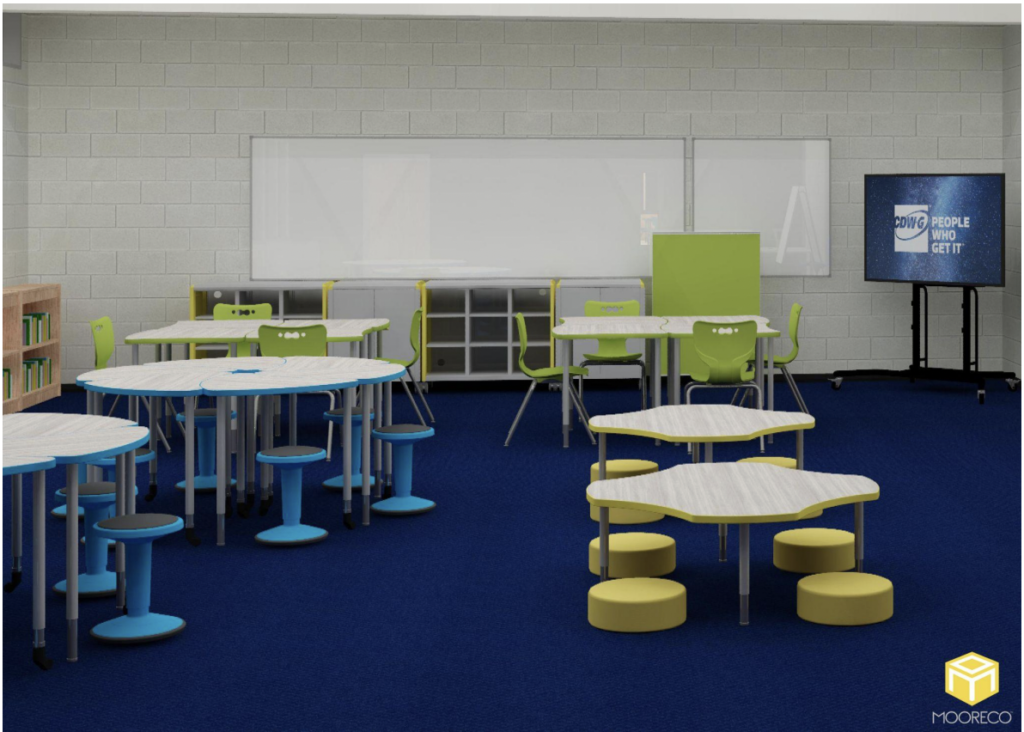
To: Examples of a blueprint and 2D rendering of a middle school language lab, created by CDW-G based on iterative teacher feedback
Results
Research findings were used to plan and implement a district wide pilot of AV technology that would ultimately inform a 4 year AV upgrade plan that was approved for funding.
As reported in the Cohasset Public Schools Achievements report 2020-2023, published on the CPS district web site (Cohasset Public Schools 2020-2023 Achievement Report), the following achievements were made possible by this research:
- Purchased and installed of furniture and AV technology as a model for the elementary school Special Education classroom, Fall 2022 (CEF grant and community member donation)
- Reimagined the separate spaces of the tech lab and library into the Deer Hill Innovation
Commons; expected completion, Fall 2023 (CEF grant and community member
donation) Re-designed STEM and robotics rooms in the Middle School, SY 2022-2023
Purchased and planned installation of interactive LCD panels in all Middle School classrooms SY 2023- 2024
- Purchased AV equipment for Elementary Computer Lab, SY 2022-2023 (CEF grant and community member donation)
- Purchased and installed collaborative furniture in upper and lower lobbies of Cohasset High School
- Continued technology pilot program and learning space creation
This page was last modified: February 22, 2024